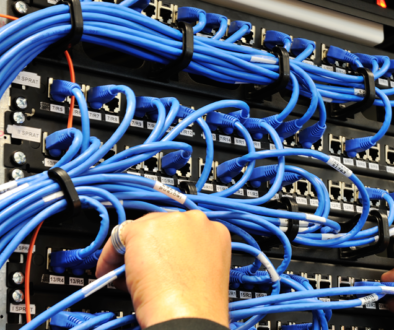Is Blockchain Environmentally Friendly or Unfriendly
One of the most contentious innovations of the Digital Revolution is blockchain technology. Its enormous potential still needs to be realized since there is far too much attention paid to cryptocurrency mining instead of using it for more… wiser… objectives. Blockchain is now the villain in the never-ending conflict between technology and the environment due to the enormous energy needed to power mining. But some great brains have also come up with intriguing and curious ways to employ this technology for a better planet. Let’s examine some of the benefits and drawbacks of blockchain technology and how it affects the environment. (Read Are Cryptocurrencies the True Future of the World’s Economy for more information about cryptocurrencies.)
Mining and Its Consequences
Mining produces a lot of electricity—more than 20 European states combined. Numerous mighty computers used to operate the mining network consume much energy to produce its encryption. Practical efforts 90% of the cost of mining a crypto coin is electricity, and as the amount of “computer brain power” required grows, crypto mining now makes up close to 1% of the world’s energy use. Doesn’t that seem foreboding? Things are not as bad as they appear to be.
In fact, except for China, over 80% of this energy is produced in “green factories” located all over the United States and Europe. Many “lesser players” on the world stage have hopped on the bandwagon since blockchain offers a new source of income that almost anyone can claim. New ones are replacing old power plants in Africa due to mining’s push for innovation in the energy sector. Windmills are sprouting up everywhere, the utilization of salt water to generate energy, and so forth. Since wind, solar, or a waterfall cannot be turned off when the energy demand is lessened, most green energy would be squandered if not used. Most of the energy used to run cryptocurrency mining operations originates from energy surpluses that many countries cannot dispose of. Just now, we figured out a clever application for something that would otherwise go to waste.
Efficient use of energy
The importance of efficient energy use outweighs that of reduced energy use. Consumption will increase by 28% over the next two decades, even if we discount the additional strain that crypto mining places on the world’s energy grids. Humanity needs more energy. It’s as simple as that. We should concentrate on the remaining 99 percent and figure out how to generate it more efficiently and with a lower environmental impact rather than criticizing this new 1 percent that emerged in 2017.
And this is where decentralization and blockchain come to our aid. Eloncity, a new energy grid built on the blockchain, has been suggested as a futuristic and creative way to increase the system’s effectiveness. In its place, a considerably more effective and intelligent energy storage system based on a network of smart microgrids is intended to replace the inefficient and burdensome centralized power supply. Significant energy distribution and service expenses are associated with the centralized power supply mode, which vastly outweighs the benefits—the price of energy in general. Global testing of local decentralized renewable power sources and small regional networks has been done to rethink the value of energy. To maximize resource utilization, assist consumers in managing their electricity usage patterns, alter consumption in response to changes in energy prices, and store excess energy, energy resources are dynamically optimized and integrated.
Supply Chain Management Improvement
It was neither the first nor the last time corporate social responsibility caught the media’s attention when the Volkswagen fuel pollution issue initially surfaced in 2015. Emergencies of grave dangers like the toxic pesticides found in food goods have put the health of entire nations and the environmental stability of vast regions in danger. Both in Europe and South Korea. The current supply chain management systems must closely monitor its many stages to determine when an issue arises and how to handle it. Additionally, because each supply chain management system is tailored to the requirements of a particular firm, it needs more flexibility and openness for independent third parties to oversee it. (See Big Data: Logistically Speaking for more information on supply chain management.)
What if we could track the supply throughout each phase using IoT devices and blockchain technologies to prevent this? TEMCO presents a new blockchain-based solution for various industries, including automobiles, pharmaceuticals, and textiles. Beyond supply chain management and transparency, their technical proposal offers a novel approach to analyzing the supply chain’s effectiveness and cutting alternative expenses, including environmental and organizational costs. Consumers will receive real-time information on the dependability of the supply chain’s management requirements due to the employment of intelligent contracts throughout all process phases. Everyone will be connected, from producers to warehouses, transportation providers, distributors, and final customers. In reality, more transparency will compel businesses to take responsibility for their carbon footprint and the environmental consequences of their decisions. Walton chain’s system, which uses RFID (radio-frequency identification) tags to track things at every stage and keep tangible items on-chain, is comparable.
Conclusion
Thankfully, blockchain technology offers a constructive response to one of humanity’s long-standing issues: environmental damage. It is not only considerably more sustainable than first believed but has also sparked a movement toward using cleaner, greener energy sources. It can increase productivity and minimize the environmental impact of humans’ use of other modern technologies to solve some of their concerns.
Related posts:
Exploring the World of Blockchain: An Introduction to Decentralized Technology
The Ultimate Guide to the HyperX Cloud 2/Cloud II: A Closer Look at its Features and Performance



